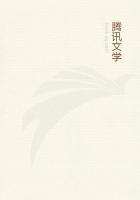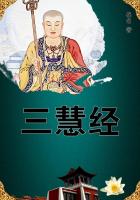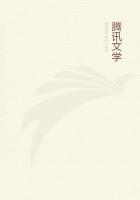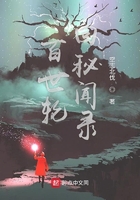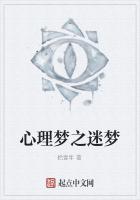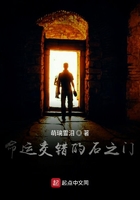The next Vedic account of creation which we propose to consider is as remote as possible in character from the sublime philosophic poem. In the Purusha Sukta, the ninetieth hymn of the tenth book of the Rig-Veda Sanhita, we have a description of the creation of all things out of the severed limbs of a magnified non-natural man, Purusha. This conception is of course that which occurs in the Norse myths of the rent body of Ymir. Borr's sons took the body of the Giant Ymir and of his flesh formed the earth, of his blood seas and waters, of his bones mountains, of his teeth rocks and stones, of his hair all manner of plants, of his skull the firmament, of his brains the clouds, and so forth. In Chaldean story, Bel cuts in twain the magnified non-natural woman Omorca, and converts the halves of her body into heaven and earth. Among the Iroquois in North America, Chokanipok was the giant whose limbs, bones and blood furnished the raw material of many natural objects; while in Mangaia portions of Ru, in Egypt of Set and Osiris, in Greece of Dionysus Zagreus were used in creating various things, such as stones, plants and metals. The same ideas precisely are found in the ninetieth hymn of the tenth book of the Rig-Veda. Yet it is a singular thing that, in all the discussions as to the antiquity and significance of this hymn which have come under our notice, there has not been one single reference made to parallel legends among Aryan or non-Aryan peoples. In accordance with the general principles which guide us in this work, we are inclined to regard any ideas which are at once rude in character and widely distributed, both among civilised and uncivilised races, as extremely old, whatever may be the age of the literary form in which they are presented. But the current of learned opinions as to the date of the Purusha Sukta, the Vedic hymn about the sacrifice of Purusha and the creation of the world out of fragments of his body, runs in the opposite direction. The hymn is not regarded as very ancient by most Sanskrit scholars. We shall now quote the hymn, which contains the data on which any theory as to its age must be founded:--
Rig-Veda, x. 90; Muir, Sanskrit Texts, 2nd edit., i. 9.
"Purusha has a thousand heads, a thousand eyes, a thousand feet.
On every side enveloping the earth, he overpassed (it) by a space of ten fingers. Purusha himself is this whole (universe), whatever is and whatever shall be. . . . When the gods performed a sacrifice with Purusha as the oblation, the spring was its butter, the summer its fuel, and the autumn its (accompanying) offering.
This victim, Purusha, born in the beginning, they immolated on the sacrificial grass. With him the gods, the Sadhyas, and the Rishis sacrificed. From that universal sacrifice were provided curds and butter. It formed those aerial (creatures) and animals both wild and tame. From that universal sacrifice sprang the Ric and Saman verses, the metres and Yajush. From it sprang horses, and all animals with two rows of teeth; kine sprang from it; from it goats and sheep. When (the gods) divided Purusha, into how many parts did they cut him up? What was his mouth? What arms (had he)?
What (two objects) are said (to have been) his thighs and feet?
The Brahman was his mouth; the Rajanya was made his arms; the being (called) the Vaisya, he was his thighs; the Sudra sprang from his feet. The moon sprang from his soul (Mahas), the sun from his eye, Indra and Agni from his mouth, and Yaiyu from his breath. From his navel arose the air, from his head the sky, from his feet the earth, from his ear the (four) quarters; in this manner (the gods)formed the world. When the gods, performing sacrifice, bound Purusha as a victim, there were seven sticks (stuck up) for it (around the fire), and thrice seven pieces of fuel were made. With sacrifice the gods performed the sacrifice. These were the earliest rites. These great powers have sought the sky, where are the former Sadhyas, gods."The myth here stated is plain enough in its essential facts. The gods performed a sacrifice with a gigantic anthropomorphic being (Purusha = Man) as the victim. Sacrifice is not found, as a rule, in the religious of the most backward races of all; it is, relatively, an innovation, as shall be shown later. His head, like the head of Ymir, formed the sky, his eye the sun, animals sprang from his body. The four castes are connected with, and it appears to be implied that they sprang from, his mouth, arms, thighs and feet. It is obvious that this last part of the myth is subsequent to the formation of castes. This is one of the chief arguments for the late date of the hymn, as castes are not distinctly recognised elsewhere in the Rig-Veda. Mr. Max Muller believes the hymn to be "modern both in its character and in its diction," and this opinion he supports by philological arguments. Dr. Muir says that the hymn "has every character of modernness both in its diction and ideas". Dr Haug, on the other hand, in a paper read in 1871, admits that the present form of the hymn is not older than the greater part of the hymns of the tenth book, and than those of the Atharva Veda; but he adds, "The ideas which the hymn contains are certainly of a primeval antiquity. . . . In fact, the hymn is found in the Yajur-Veda among the formulas connected with human sacrifices, which were formerly practised in India." We have expressly declined to speak about "primeval antiquity," as we have scarcely any evidence as to the myths and mental condition for example, even of palaeolithic man; but we may so far agree with Dr.
Haug as to affirm that the fundamental idea of the Purusha Sukta, namely, the creation of the world or portions of the world out of the fragments of a fabulous anthropomorphic being is common to Chaldeans, Iroquois, Egyptians, Greeks, Tinnehs, Mangaians and Aryan Indians. This is presumptive proof of the antiquity of the ideas which Dr. Muir and Mr. Max Muller think relatively modern.

